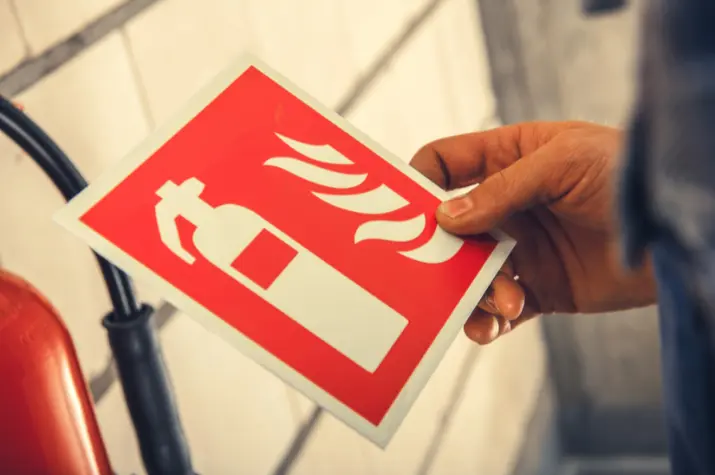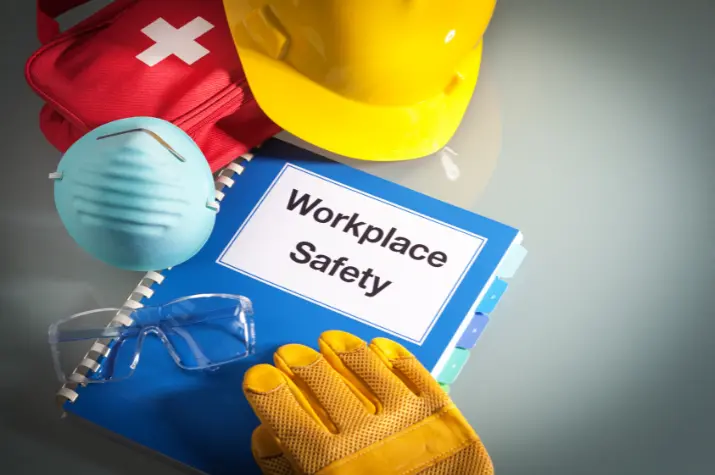
To provide for your employees’ safety and your workplace’s protection, it is important to conduct a fire safety risk assessment. By identifying potential fire hazards and taking appropriate measures to prevent them, you can greatly reduce the risk of a fire breaking out and minimize the potential damage caused.
This article will guide you through conducting a fire safety risk assessment in your workplace. It will provide you with the necessary guidelines and preventive measures to help provide a safe working environment. When in doubt about how to do any of the following, please consult with a fire prevention expert or service.
Conducting Risk Assessment
Before discussing any of the specifics of conducting a fire safety risk assessment, it’s important to understand the purpose and benefits of this process. A fire safety risk assessment is an evaluation of your workplace to identify any potential fire hazards and evaluate the effectiveness of your fire safety measures. It involves assessing the likelihood of a fire occurring, as well as the potential consequences if a fire were to break out.
During the assessment, you will need to think about several factors, including the nature of your workplace, the equipment and substances in it, the layout of the premises, and the activities taking place. Evaluating these points will help you identify areas where fire risks are present, allowing you to put appropriate fire prevention and control measures in place.
To conduct a fire safety risk assessment effectively, you should follow these steps:
Step 1: Identify Fire Hazards
The first step in conducting a fire safety risk assessment is to identify potential fire hazards in your workplace. This can include anything that has the potential to start a fire, like electrical equipment, flammable substances, faulty wiring, or open flames.
Look at all areas within your workplace, including storage rooms, kitchens, offices, workshops, and any other areas where fire hazards may be present. It’s important to be thorough in your assessment to make sure that no potential fire hazards are overlooked.
Step 2: Evaluate Ignition Sources
Once you have identified the potential fire hazards, the next step is to evaluate the sources of ignition. Ignition sources are objects or processes that can cause a fire when in the presence of flammable materials. Common ignition sources in a workplace can include electrical equipment, heating systems, smoking areas, or cooking facilities.
By gauging the proximity of ignition sources to flammable substances, you can determine the likelihood of a fire occurring. It’s important to take into account any possible sources of ignition and their potential to start a fire.
Step 3: Assess Fire Spread Risks
After identifying the potential ignition sources, the next step is to assess the risk of fire spread. This involves examining the layout of your workplace, including the presence of fire doors, fire alarms, and emergency exits.
Identify any potential barriers that could obstruct the safe evacuation of employees in the event of a fire. Make sure the fire exits are clear of obstructions and that employees have easy access to emergency exits at all times.
Step 4: Evaluate Fire Safety Measures
As part of your fire safety risk assessment, you should also evaluate the effectiveness of your existing fire safety measures. This includes examining the availability and usefulness of fire extinguishers, sprinkler systems, fire alarms, emergency lighting, and any other fire safety equipment.
If any of the fire safety measures are found to be inadequate or faulty, they should be repaired or replaced immediately. These actions will help to guarantee the safety of your workplace and employees.
Step 5: Document and Review
Finally, it is imperative to document your findings and regularly review your fire safety risk assessment. By documenting the assessment, you can keep track of any identified hazards, control measures that were put in place, and scheduled maintenance for fire safety equipment.
Regularly reviewing your fire safety risk assessment will help you identify any changes in the workplace that may require updated fire safety measures. This can include changes in equipment, processes, or the layout of the premises.
Read also: 5 Ways Businesses Can Improve Health And Safety In The Workplace
Workplace Safety Guidelines

Remember that different workplaces pose unique risks. Industrial setting fire prevention will differ from that of an office building, for example.
Providing workplace safety goes beyond conducting a fire safety risk assessment. There are several general guidelines that you should follow to ensure the overall safety and well-being of your employees.
The following guidelines can help prevent accidents, minimize injuries, and promote a safe working environment…
1. Provide Safety Training
Make sure that all employees receive complete safety training upon joining the company and regularly thereafter. This training should cover a variety of safety topics, including fire safety, first aid, evacuation procedures, and general workplace safety practices.
2. Establish Clear Safety Policies
Create a set of clear safety policies and procedures and communicate them effectively to all employees. These policies should cover various safety aspects, like the use of personal protective equipment, safe handling of equipment and chemicals, and proper reporting of accidents or near misses.
3. Maintain an Organized and Clean Workplace
A disorganized and cluttered workplace can increase accident risks and interfere with evacuation in the event of a fire. Encourage employees to maintain a clean and organized workspace, properly store equipment and materials, and promptly report any potential hazards or maintenance issues.
4. Regularly Inspect and Maintain Equipment
Make sure that all equipment and machinery are regularly inspected, maintained, and serviced by qualified professionals. Regular inspections can help identify potential hazards or malfunctions that could lead to accidents or fires.
5. Promote Open Communication
Provide a workplace where employees feel like they can report safety concerns or suggest improvements. Encourage open communication and provide an anonymous reporting system for employees to raise safety issues with no fear of retaliation.
Fire Prevention Measures

Along with conducting a fire safety risk assessment and following workplace safety guidelines, there are several specific fire prevention measures you can use to further minimize the risk of a fire breaking out in your workplace…
1. Install Fire Detection and Alarm Systems
Be certain that your workplace is equipped with an appropriate fire detection and alarm system. This should include smoke detectors, fire alarms, and manual call points located strategically throughout the premises. Regularly test and maintain these systems to guarantee proper functionality.
2. Provide Fire Extinguishers and Fire Blankets
Place fire extinguishers and fire blankets in easily accessible locations throughout your workplace. Train employees on how to operate fire extinguishers and when it is safe to do so. See to it that fire extinguishers are appropriately maintained and regularly inspected.
3. Implement Proper Electrical Safety Measures
Faulty electrical equipment or improper usage can be a real fire hazard. Regularly inspect and maintain electrical systems and equipment. Make sure that only qualified personnel carry out electrical repairs or installations.
4. Store Flammable Substances Properly
If your workplace deals with flammable substances, it is necessary to store them properly. Use well-ventilated, designated storage areas away from ignition sources. Storage areas need to be equipped with appropriate fire safety measures such as fire-resistant cabinets or containers.
5. Develop and Practice Evacuation Plans
Establish clear evacuation plans and escape routes for your workplace. Conduct regular fire drills so employees are familiar with evacuation procedures and can evacuate safely and efficiently in the event of a fire.
6. Designate Fire Wardens and First Aid Personnel
Appoint and train employees as fire wardens and first aid personnel. Fire wardens should be responsible for assisting with evacuations and making sure that everyone has left the building safely. First aid personnel should be trained in providing first aid in case of injuries or accidents.
Are You Prepared?
By implementing these fire prevention measures, you can further improve the safety of your workplace and reduce the risk of fires occurring.
Remember, conducting a fire safety risk assessment is not a one-time activity. It should be regularly reviewed and updated to reflect any changes in your workplace and to make sure that all fire safety measures are effective and up to date.
By prioritizing the safety of your employees and using appropriate fire prevention measures, you can create a secure working environment that protects everyone from the devastating consequences of a fire.
About The Author:
Stacey Smith is a freelance health writer. She is passionate about writing about women’s health, dental health, diabetes, endocrinology, and nutrition and provides in-depth features on the latest in health news for medical clinics and health magazines.




